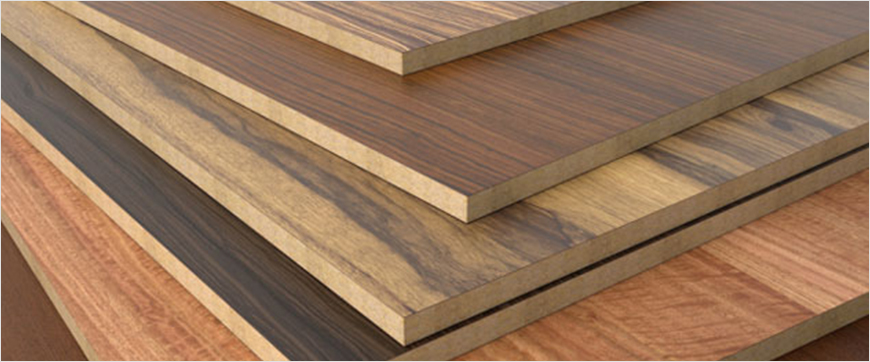
In the world of wood-based panels, commercial board and plywood are two popular choices used in various applications, from construction to furniture making. While they may seem similar at first glance, there are significant differences between these two materials that are essential to understand for anyone involved in construction, carpentry, or DIY projects. In this comprehensive guide, we’ll delve into the distinctions between commercial board and plywood, covering their composition, properties, applications, and more.
Understanding Commercial Board
Commercial board, also known as particle board or chipboard, is an engineered wood product made from wood particles, chips, or sawmill shavings. These wood particles are bonded together with synthetic resins or other suitable binders under high heat and pressure.
Composition and Manufacturing Process
The manufacturing process of commercial board involves the following steps:
- Wood Particle Preparation: Wood residues, such as sawdust, chips, and shavings, are collected from various sources, including sawmills and furniture factories.
- Drying: The wood particles are dried to remove any moisture, ensuring proper bonding with the adhesive.
- Blending: The dried wood particles are mixed with a binder, typically a synthetic resin like urea-formaldehyde or melamine-formaldehyde.
- Mat Formation: The blended mixture is spread into a uniform mat or layer.
- Pressing: The mat is subjected to high heat and pressure, which activates the binder and bonds the wood particles together, forming a solid panel.
- Finishing: The formed panels may undergo additional finishing processes, such as sanding, trimming, or applying a decorative surface layer.
Properties of Commercial Board
- Uniform Composition: Commercial board has a homogeneous composition throughout the panel, ensuring consistent strength and performance.
- Density: Commercial boards are available in various densities, ranging from low-density to high-density, depending on the intended application and desired strength.
- Dimensional Stability: Due to the use of synthetic resins as binders, commercial boards exhibit good dimensional stability and resistance to moisture and humidity changes.
- Cost-Effective: Commercial boards are generally more affordable than plywood and solid wood, making them a popular choice for budget-conscious projects.
Applications of Commercial Board
Commercial boards are widely used in various applications, including:
- Furniture manufacturing (cabinets, shelves, countertops)
- Flooring underlayment
- Interior wall paneling
- Doors and door cores
- Packaging materials
- Insulation boards
Understanding Plywood
Plywood is a versatile engineered wood panel made by bonding thin layers of wood veneer, called plies or veneers, together with an adhesive. The plies are arranged in alternating grain directions, creating a cross-laminated structure that enhances strength and dimensional stability.
Composition and Manufacturing Process
The manufacturing process of plywood involves the following steps:
- Log Preparation: Logs are debarked and cut into smaller sections for veneer production.
- Veneer Peeling: The log sections are rotated against a sharp blade, peeling off thin layers of wood veneer.
- Veneer Drying: The peeled veneers are dried to remove moisture, ensuring proper bonding with the adhesive.
- Lay-up: The dried veneers are arranged in alternating grain directions, typically with an odd number of plies for structural balance.
- Gluing and Pressing: The veneer layers are bonded together with an adhesive, such as phenol-formaldehyde or urea-formaldehyde, under high heat and pressure.
- Trimming and Finishing: The formed plywood panels are trimmed to the desired size and may undergo additional finishing processes, such as sanding or applying a surface coating.
Properties of Plywood
- Cross-Laminated Structure: The alternating grain direction of the plies provides superior strength, stability, and resistance to warping and splitting.
- Strength-to-Weight Ratio: Plywood offers an excellent strength-to-weight ratio, making it suitable for various structural applications.
- Moisture Resistance: Depending on the adhesive used, plywood can exhibit good moisture resistance, making it suitable for outdoor or high-humidity applications.
- Workability: Plywood can be easily cut, drilled, and shaped, making it versatile for various woodworking projects.
Applications of Plywood
Plywood is widely used in various applications, including:
- Construction (subflooring, sheathing, concrete forming)
- Furniture and cabinetry
- Packaging and crating
- Marine and transportation applications
- Signage and decorative panels
Key Differences Between Commercial Board and Plywood
| Characteristic | Commercial Board | Plywood |
|---|---|---|
| Composition | Made from wood particles bonded with synthetic resins | Made from thin layers of wood veneers bonded with adhesive |
| Structure | Homogeneous composition | Cross-laminated structure with alternating grain directions |
| Strength | Generally less strong than plywood | Stronger and more dimensionally stable due to cross-laminated structure |
| Moisture Resistance | Moderate moisture resistance | Good moisture resistance, depending on the adhesive used |
| Cost | Generally more affordable than plywood | More expensive than commercial board |
| Applications | Interior furniture, flooring, wall paneling | Construction, furniture, marine, packaging |
Factors to Consider When Choosing Between Commercial Board and Plywood
When deciding between commercial board and plywood for your project, consider the following factors:
- Intended Application: Evaluate the specific requirements of your project, such as load-bearing capacity, moisture exposure, and decorative needs, to determine the most suitable material.
- Structural Strength: If your project demands high structural strength and dimensional stability, plywood may be the better choice due to its cross-laminated structure.
- Budget Constraints: Commercial board is generally more cost-effective than plywood, making it a viable option for budget-conscious projects where structural strength is not a primary concern.
- Environmental Considerations: Some commercial boards may contain formaldehyde-based resins, which can raise environmental concerns. Plywood made with eco-friendly adhesives may be a better choice for environmentally conscious projects.
- Workability and Versatility: While both materials can be cut and shaped, plywood may offer better workability and versatility for intricate woodworking projects.
- Moisture Exposure: For applications involving high moisture or outdoor exposure, moisture-resistant plywood types or exterior-grade commercial boards may be more suitable.
1. Can commercial board be used for structural applications?
While commercial board can be used for some light-duty structural applications, it is generally not recommended for load-bearing or high-stress applications due to its lower strength and dimensional stability compared to plywood.
2. Is plywood more expensive than commercial board?
Yes, plywood is typically more expensive than commercial board due to its more complex manufacturing process and superior strength and stability.
3. Can commercial board be used for outdoor applications?
Commercial board is generally not recommended for outdoor applications or areas with high moisture exposure, as it can be susceptible to swelling and deterioration over time. However, some exterior-grade commercial boards are available with improved moisture resistance.
4. Is plywood more environmentally friendly than commercial board?
Plywood can be more environmentally friendly than some types of commercial board, especially when made with eco-friendly adhesives and sustainably sourced wood veneers. However, some commercial boards are also available with low-emission or formaldehyde-free binders.
5. Can commercial board be painted or stained?
Commercial board can be painted or stained, but it may require proper surface preparation and sealing to achieve a smooth finish. Plywood, especially with a decorative veneer, may provide a more aesthetically pleasing surface for finishing.
Conclusion
When it comes to choosing between commercial board and plywood, there is no one-size-fits-all solution. Both materials have their unique advantages and applications, and the choice ultimately depends on factors such as project requirements, budget, structural demands, and environmental considerations.
Commercial board, with its cost-effectiveness and uniform composition, is often the preferred choice for interior furniture, wall paneling, and other non-structural applications where budget is a concern. On the other hand, plywood’s cross-laminated structure and superior strength make it the go-to material for construction, load-bearing applications, and projects requiring high dimensional stability and moisture resistance.
As a leading block board manufacturer, we understand the importance of using the right materials for the right applications. Whether you choose commercial board or plywood, our experienced team is here to guide you through the selection process and provide high-quality products tailored to your specific needs.
Remember, the key to a successful project lies in understanding the differences between these materials and making an informed decision based on your unique requirements. With the right knowledge and expertise, you can ensure that your project not only meets your expectations but also stands the test of time.





